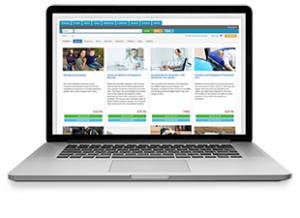
Ditch the Paper, Go Digital with FLHA Tools
Paper-based Field Level Hazard Assessments (FLHAs) have a way of disappearing, getting smeared in the rain, or stuck in a pile that no one reviews. Digital FLHA tools don’t just tidy up your workflow, they elevate how safety gets done on-site.
Here’s how to move your team from paper to digital without the usual resistance.
1. Focus on What Actually Gets Used
Don’t just copy-paste your current form into an app. Take time to look at:
- Which sections crews consistently fill out
- What’s usually skipped or marked “N/A”
- What info leads to actual decisions
Trim the fat before you go digital.
2. Choose FLHA Tools That Fit the Jobsite
Look for mobile apps designed for the field:
- Offline functionality for remote areas
- User-friendly options like dropdowns and photo uploads
- Real-time syncing when service returns
If it’s clunky or slow, your crew won’t use it.

3. Explain the Why, Not Just the How
Rollout training that goes beyond tapping buttons:
- Faster input = more time for work
- Better reports = quicker interventions
- Digital records = smoother audits
Make the benefits crystal clear.
4. Pilot Test Before Full Rollout
Run a short trial with one crew:
- Gather real feedback
- Adjust based on field input
- Share quick wins like time saved or hazards caught
Early wins build momentum.
5. Transition in Phases, Not All at Once
Don’t pull the plug on paper overnight:
- Begin with high-risk tasks or high-volume sites
- Mandate digital for specific activities (like confined space work)
- Set a clear go-digital date with plenty of support
This reduces friction and keeps people on board.
6. Use the Data to Improve, Not Just Report
Digital FLHA tools give you insights you’ve never had before:
- Spot recurring hazards
- Track “stop work” trends
- Compare completion rates by crew or location
Use this data to strengthen your safety game.

The Bottom Line
Switching to digital FLHA tools doesn’t need to be overwhelming. With smart planning and a solid platform, you’ll spend less time chasing paper and more time preventing incidents.

































